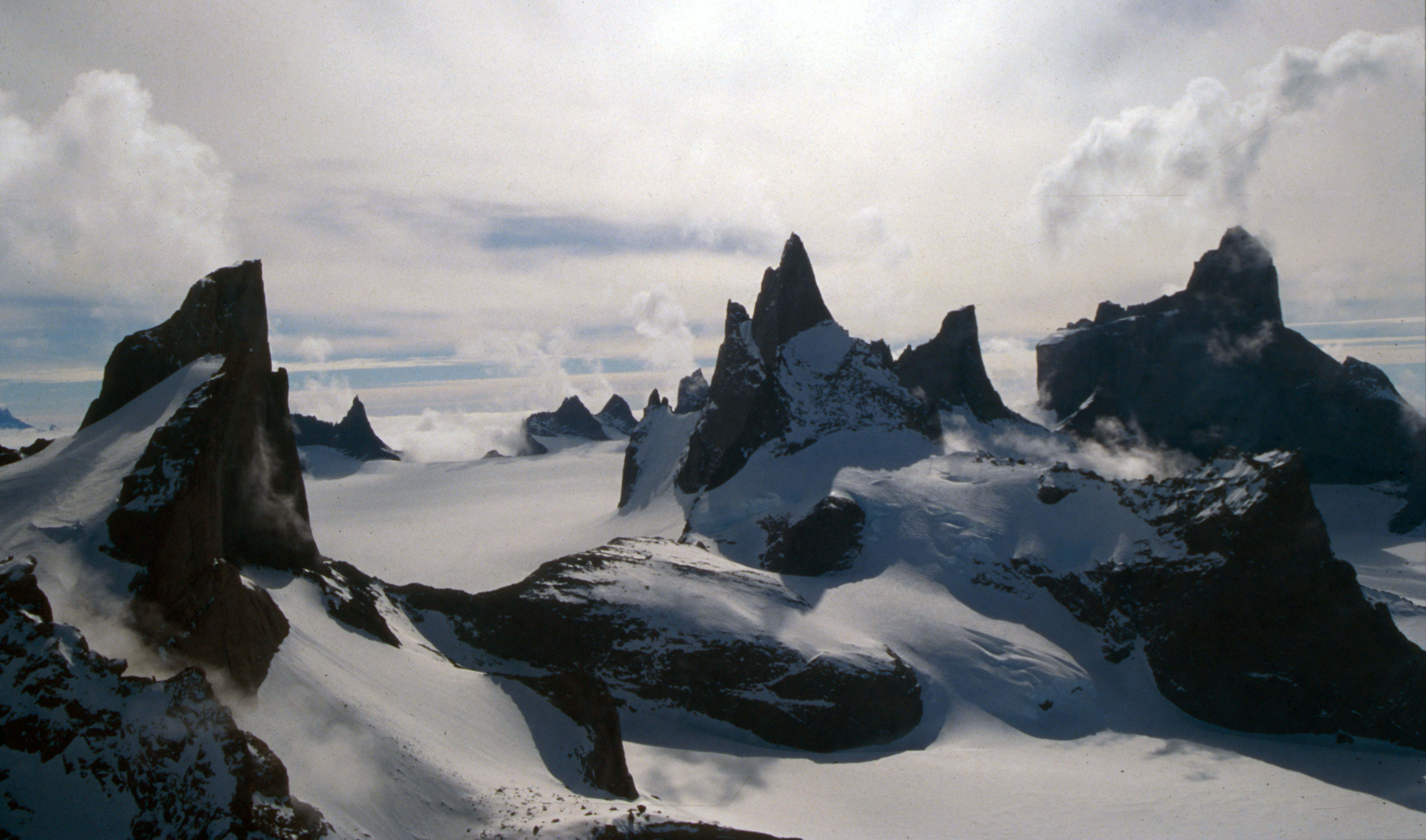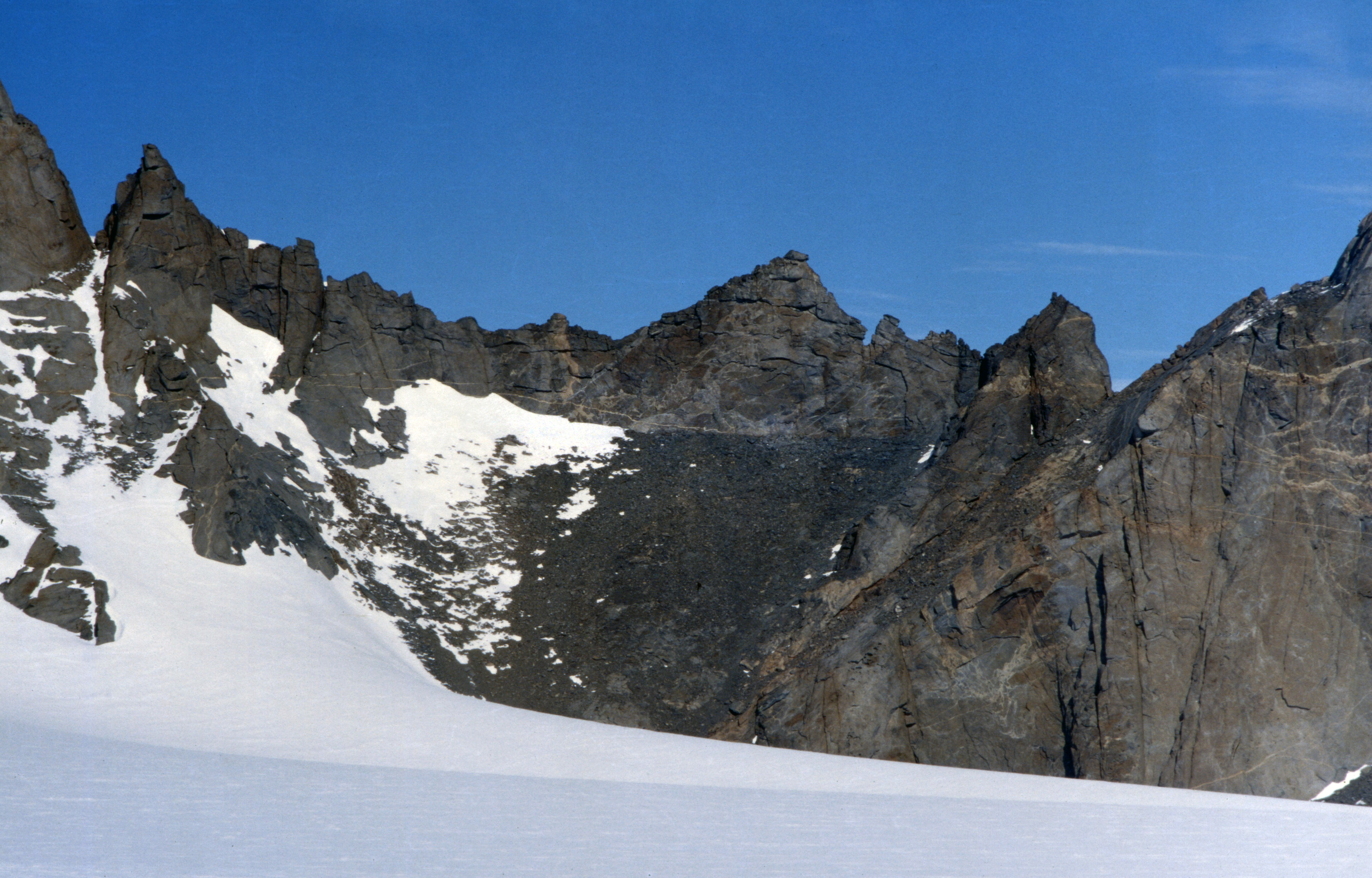|
Skålebreen
Skålebreen is a glacier flowing north between Festninga Mountain and Mount Hochlin in the Mühlig-Hofmann Mountains in Queen Maud Land. Mapped by Norwegian cartographers from surveys and air photos by the Norwegian Antarctic Expedition (1956–60) and named Skålebreen. See also * List of glaciers in the Antarctic * Glaciology Glaciology (; ) is the scientific study of glaciers, or, more generally, ice and natural phenomena that involve ice. Glaciology is an interdisciplinary Earth science that integrates geophysics, geology, physical geography, geomorphology, clim ... References Glaciers of Queen Maud Land Princess Martha Coast {{PrincessMarthaCoast-glacier-stub ... [...More Info...] [...Related Items...] OR: [Wikipedia] [Google] [Baidu] |
Mühlig-Hofmann Mountains
The Mühlig-Hofmann Mountains () is a major group of associated mountain features extending east to west for between the Gjelsvik Mountains and the Orvin Mountains in Queen Maud Land, East Antarctica. With its summit at , the massive Jøkulkyrkja Mountain forms the highest point in the Mühlig-Hofmann Mountains. Discovery and naming The Mühlig-Hofmann Mountains were discovered by the Third German Antarctic Expedition (1938-1939), led by Capt. Alfred Ritscher, and named for the division director of the German Air Ministry. They were remapped by the Norwegian Antarctic Expedition, 1956-1960. Features Glaciers * Austreskorve Glacier ** Kvitholten Hill * Flogeken Glacier * Langflog Glacier * Lunde Glacier * Skålebreen ** Skålebrehalsen Terrace * Sloket Glacier * Tønnesen Glacier * Vestreskorve Glacier ** Hamarglovene Crevasses Mountains and ranges * Ahlstad Hills * Breplogen Mountain ** Høgsenga Crags ** Småkovane Cirques * Buddenbrock Range * Cumulus Moun ... [...More Info...] [...Related Items...] OR: [Wikipedia] [Google] [Baidu] |
Queen Maud Land
Queen Maud Land () is a roughly region of Antarctica Territorial claims in Antarctica, claimed by Norway as a dependent territory. It borders the claimed British Antarctic Territory 20th meridian west, 20° west, specifically the Caird Coast, Coats Land on the West, and the Australian Antarctic Territory 45th meridian east, 45° east, specifically Enderby Land on the East. In addition, a small unclaimed area from 1939 was annexed in June 2015. Positioned in East Antarctica, it makes out about one-fifth of the continent, and is named after the Norwegian Maud of Wales, Queen Maud (1869–1938). In 1930, the Norwegian Hjalmar Riiser-Larsen was the first person known to have set foot in the territory. On 14 January 1939, the territory was claimed by Norway. On 23 June 1961, Queen Maud Land became part of the Antarctic Treaty System, making it a demilitarised zone. It is one of dependencies of Norway, two Antarctic claims made by Norway, the other being Peter I Island. They are adm ... [...More Info...] [...Related Items...] OR: [Wikipedia] [Google] [Baidu] |
Antarctica
Antarctica () is Earth's southernmost and least-populated continent. Situated almost entirely south of the Antarctic Circle and surrounded by the Southern Ocean (also known as the Antarctic Ocean), it contains the geographic South Pole. Antarctica is the fifth-largest continent, being about 40% larger than Europe, and has an area of . Most of Antarctica is covered by the Antarctic ice sheet, with an average thickness of . Antarctica is, on average, the coldest, driest, and windiest of the continents, and it has the highest average elevation. It is mainly a polar desert, with annual Climate of Antarctica#Precipitation, precipitation of over along the coast and far less inland. About 70% of the world's freshwater reserves are frozen in Antarctica, which, if melted, would raise global sea levels by almost . Antarctica holds the record for the Lowest temperature recorded on Earth, lowest measured temperature on Earth, . The coastal regions can reach temperatures over in the ... [...More Info...] [...Related Items...] OR: [Wikipedia] [Google] [Baidu] |
Glacier
A glacier (; or ) is a persistent body of dense ice, a form of rock, that is constantly moving downhill under its own weight. A glacier forms where the accumulation of snow exceeds its ablation over many years, often centuries. It acquires distinguishing features, such as crevasses and seracs, as it slowly flows and deforms under stresses induced by its weight. As it moves, it abrades rock and debris from its substrate to create landforms such as cirques, moraines, or fjords. Although a glacier may flow into a body of water, it forms only on land“Glacier, N., Pronunciation.” Oxford English Dictionary, Oxford UP, June 2024, https://doi.org/10.1093/OED/7553486115. Accessed 25 Jan. 2025. and is distinct from the much thinner sea ice and lake ice that form on the surface of bodies of water. On Earth, 99% of glacial ice is contained within vast ice sheets (also known as "continental glaciers") in the polar regions, but glaciers may be found in mountain ranges on ever ... [...More Info...] [...Related Items...] OR: [Wikipedia] [Google] [Baidu] |
Festninga Mountain
Festninga Mountain is a broad, ice-topped mountain, high, standing west of Mount Hochlin at the west end of the Mühlig-Hofmann Mountains, in Queen Maud Land, Antarctica. it was mapped by Norwegian cartographers from surveys and air photos by the Sixth Norwegian Antarctic Expedition The sixth Norwegian Antarctic Expedition (''Den norske antarktisekspedisjonen'') was a scientific expedition to Queen Maud's Land in Antarctica. The expedition was based at Norway Station () which was located on the Fimbul Ice Shelf bordering th ... (1956–60) and named Festninga (the fortress). Austvollen Bluff forms the east side of the mountain. See also * Vestvollen Bluff References Mountains of Queen Maud Land Princess Martha Coast {{PrincessMarthaCoast-geo-stub ... [...More Info...] [...Related Items...] OR: [Wikipedia] [Google] [Baidu] |
Mount Hochlin
Mount Hochlin () is a large ice-topped mountain, high, standing east of Festninga Mountain in the Mühlig-Hofmann Mountains of Queen Maud Land, Antarctica. The Spøta Spur extends from its north-central section. It was mapped by Norwegian cartographers from surveys and air photos by the Sixth Norwegian Antarctic Expedition The sixth Norwegian Antarctic Expedition (''Den norske antarktisekspedisjonen'') was a scientific expedition to Queen Maud's Land in Antarctica. The expedition was based at Norway Station () which was located on the Fimbul Ice Shelf bordering th ... (1956–60) and named for L. Hochlin, a radio operator and dog driver with the expedition (1956–58). See also * Stålstuten Ridge * Tunet Valley References Mountains of Queen Maud Land Princess Martha Coast {{PrincessMarthaCoast-geo-stub ... [...More Info...] [...Related Items...] OR: [Wikipedia] [Google] [Baidu] |
Sixth Norwegian Antarctic Expedition
The sixth Norwegian Antarctic Expedition (''Den norske antarktisekspedisjonen'') was a scientific expedition to Queen Maud's Land in Antarctica. The expedition was based at Norway Station () which was located on the Fimbul Ice Shelf bordering the coast of Queen Maud Land. The expedition carried out survey work and scientific studies for three-four years (1956–1960). The expedition was intended as part of Norway's participation in the International Geophysical Year, 1957-58. The crew set sail from Oslo Oslo ( or ; ) is the capital and most populous city of Norway. It constitutes both a county and a municipality. The municipality of Oslo had a population of in 2022, while the city's greater urban area had a population of 1,064,235 in 2022 ... on board two whaling ships, the ''Polarsirkel'' and ''Polarbjørn'', on 10 November 1956. The expedition was led by Sigurd Gunnarson Helle, a geodesist at Norsk Polarinstitutt. It included a total crew of fourteen researche ... [...More Info...] [...Related Items...] OR: [Wikipedia] [Google] [Baidu] |
List Of Glaciers In The Antarctic
There are many glaciers in the Antarctic. This set of lists does not include ice sheets, ice caps or ice fields, such as the Antarctic ice sheet, but includes glacial features that are defined by their flow, rather than general bodies of ice. The lists include outlet glaciers, valley glaciers, cirque glaciers, tidewater glaciers and ice streams. Ice streams are a type of glacier and many of them have "glacier" in their name, e.g. Pine Island Glacier. Ice shelves are listed separately in the List of Antarctic ice shelves. For the purposes of these lists, the Antarctic is defined as any latitude further south than 60° (the continental limit according to the Antarctic Treaty System). List by letters * List of glaciers in the Antarctic: A–H * List of glaciers in the Antarctic: I–Z Lists by regions * List of glaciers of Adélie Land * List of glaciers of Bouvet Island * List of glaciers of Coats Land * List of glaciers of Ellsworth Land * List of glaci ... [...More Info...] [...Related Items...] OR: [Wikipedia] [Google] [Baidu] |
Glaciology
Glaciology (; ) is the scientific study of glaciers, or, more generally, ice and natural phenomena that involve ice. Glaciology is an interdisciplinary Earth science that integrates geophysics, geology, physical geography, geomorphology, climatology, meteorology, hydrology, biology, and ecology. The impact of glaciers on people includes the fields of human geography and anthropology. The discoveries of water ice on the Moon, Mars, Europa (moon), Europa and Pluto add an extraterrestrial component to the field, which is referred to as "astroglaciology". Overview A glacier is a persistent body of dense ice, a form of rock) formed from snow falling and accumulating over a long period of time; glaciers move very slowly, either descending from high mountains, as in valley glaciers, or moving outward from centers of accumulation, as in continental glaciers. Areas of study within glaciology include glacial history and the reconstruction of past glaciation. A glaciologist is a person ... [...More Info...] [...Related Items...] OR: [Wikipedia] [Google] [Baidu] |
Glaciers Of Queen Maud Land
A glacier (; or ) is a persistent body of dense ice, a form of rock, that is constantly moving downhill under its own weight. A glacier forms where the accumulation of snow exceeds its Ablation#Glaciology, ablation over many years, often centuries. It acquires distinguishing features, such as crevasses and seracs, as it slowly flows and deforms under stresses induced by its weight. As it moves, it abrades rock and debris from its substrate to create landforms such as cirques, moraines, or fjords. Although a glacier may flow into a body of water, it forms only on land“Glacier, N., Pronunciation.” Oxford English Dictionary, Oxford University Press, Oxford UP, June 2024, https://doi.org/10.1093/OED/7553486115. Accessed 25 Jan. 2025. and is distinct from the much thinner sea ice and lake ice that form on the surface of bodies of water. On Earth, 99% of glacial ice is contained within vast ice sheets (also known as "continental glaciers") in the polar regions, but glaciers may ... [...More Info...] [...Related Items...] OR: [Wikipedia] [Google] [Baidu] |





